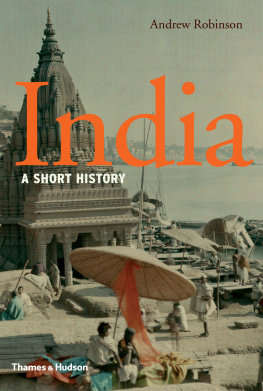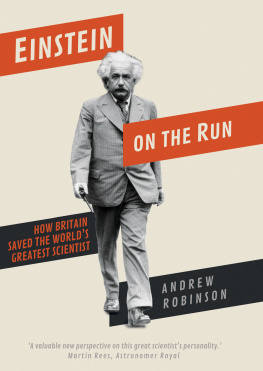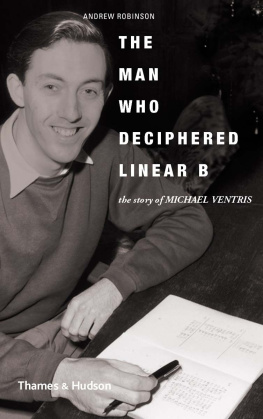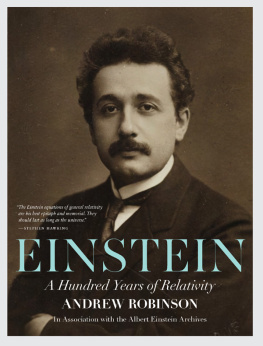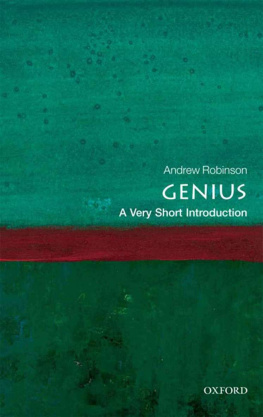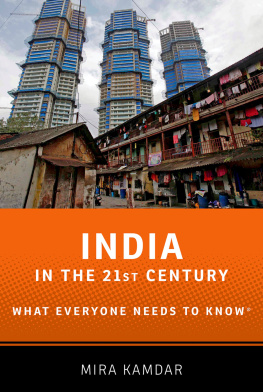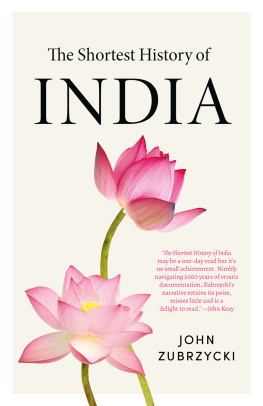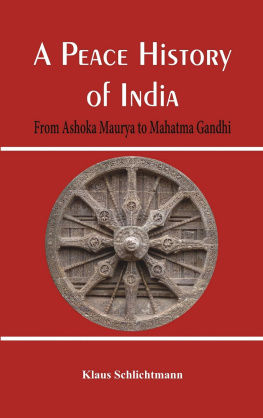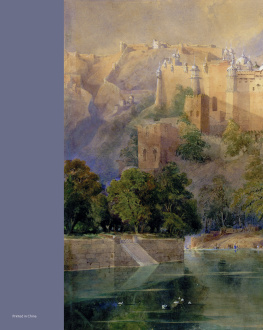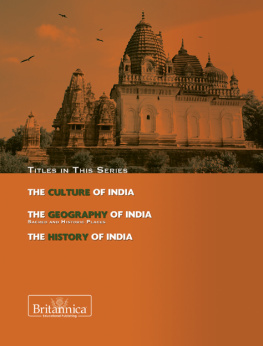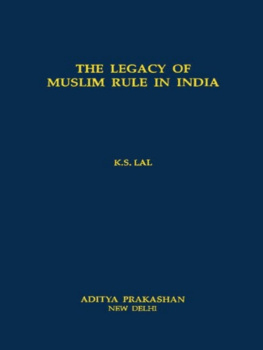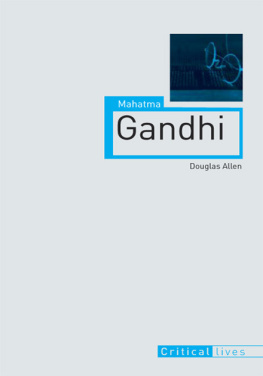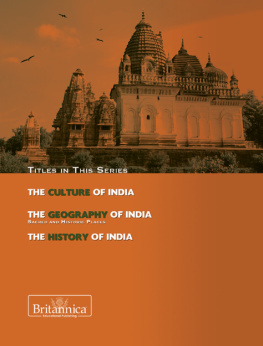CONTENTS
ABOUT THE AUTHOR
Andrew Robinson is a Kings Scholar of Eton College and holds degrees from Oxford University and the School of Oriental and African Studies, London. He has been a Visiting Fellow of Wolfson College, Cambridge, and is currently a Fellow of the Royal Asiatic Society. He is the author of twenty-five books in the arts and sciences, nine of them on aspects of Indian history and culture, including two definitive biographies, Satyajit Ray: The Inner Eye, and the co-authored Rabindranath Tagore: The Myriad-Minded Man, the first of which was described by V. S. Naipaul as an extraordinarily good, detailed and selfless book.
www.andrew-robinson.org
Other titles of interest published by
Thames & Hudson include:
Maharaja:
The Spectacular Heritage of Princely India
The Complete Taj Mahal and the Riverfront Gardens of Agra
Raghu Rais Delhi
Turkey: A Short History
See our websites
www.thamesandhudson.com
www.thamesandhudsonusa.com
First published in the United Kingdom in 2014 as
India: A Short History
ISBN 978-0-500-25199-7
by Thames & Hudson Ltd, 181a High Holborn, London WC1V 7QX
and in the United States of America by
Thames & Hudson Inc., 500 Fifth Avenue, New York, New York 10110
India: A Short History 2014 Thames & Hudson Ltd, London
This electronic version first published in 2014 by
Thames & Hudson Ltd, 181a High Holborn, London WC1V 7QX
This electronic version first published in 2014 in the United States of America by Thames & Hudson Inc., 500 Fifth Avenue, New York, New York 10110.
To find out about all our publications, please visit
www.thamesandhudson.com
www.thamesandhudsonusa.com
All Rights Reserved. No part of this publication may be reproduced or transmitted in any form or by any means, electronic or mechanical, including photocopy, recording or any other information storage and retrieval system, without prior permission in writing from the publisher.
ISBN 978-0-500-77194-5
ISBN for USA only 978-0-500-77195-2 (e-book)
On the cover: Ghat on the Ganges at Benares (Varanasi), c. 1923. Gervais Courtellemont/National Geographic Society/Corbis


Contemporary India attracts the attention of the world. Yet, only a few decades ago, the subcontinent was largely ignored by outsiders. Writing in the early 1960s, the future Nobel laureate V. S. Naipaul famously termed India An Area of Darkness after his first disillusioning sojourn in his ancestral land. In the mid-1970s, when I first arrived in India from Britain, before going to university, to teach science in a school in the Himalayas and see the country, I knew practically nothing of its history and culture, despite Indias historic, two-century relationship with Britain. In my school history classes, I had briefly studied Robert Clive, Warren Hastings and the foundation of the British empire in India in the mid-18th century, but the history of the Mughal empire, Hindu kingdoms, the empire of Asoka, the life of the Buddha and the spread of Buddhism, or the ancient Indus Valley civilization was a blank not to mention the story of Mahatma Gandhi and the end of empire in the subcontinent.
The same indifference was commonplace during the colonial period, before Indias independence from Britain in 1947, perhaps surprisingly. In 1925, the historian of India Edward J. Thompson (father of E. P. Thompson) regretted that British lack of interest in India is no new thing in a controversial little book, The Other Side of the Medal, published by Leonard and Virginia Woolfs Hogarth Press, intended to ruffle more than half a century of imperial complacency with news of hitherto concealed British atrocities against Indian civilians during the uprising of 185758 known to the British as the Indian Mutiny. It has been notorious, and a theme of savage comment by Indians, that the Indian Debate in the House of Commons has been regarded with indifference by the few who attended, with contempt by the many who stayed away, Thompson noted. A century earlier, in 1833, at the time of a crucial British parliamentary debate about the governments effective nationalization of the East India Company, the MP and historian Thomas Babington Macaulay shortly to set sail for India from London as a high government official regretted the strange indifference of all classes of people, members of Parliament, reporters and the public to Indian politics. However, he also privately admitted to his family his own profound ambivalence towards India: Am I not in fair training to be as great a bore as the greatest? For all his praiseworthy dedication to improving the educational and legal systems of India, Macaulay would himself come to epitomize British indifference to Indian culture. He had polyglot gifts in European languages, but never bothered to learn any Indian language during his four-year stint in India. In his much-quoted Minute on Education, written in Calcutta in 1835, Macaulay asserted: who could deny that a single shelf of a good European library was worth the whole literature of India and Arabia.
Indifference persisted through the 1980s, more or less. When I worked for Granada Television at the time of the making of The Jewel in the Crown, the justly acclaimed drama serial set near the end of the British Raj, the production staff looked at India chiefly through colonial-period spectacles both on screen and off. When I published a biography of Indias most internationally acclaimed living cultural figure, Satyajit Ray, in 1989, there were many reviews; but the London and New York film critics were plainly not much interested in Indian culture only in Rays artistry as a film director, as being worthy of comparison with, say, Jean Renoirs, Vittorio de Sicas or Robert Flahertys. The editor of the film magazine Sight and Sound (for which I was then writing), despite having revered Rays films since the classic Apu Trilogy of the 1950s, had nevertheless not felt the desire to visit an Indian film festival perhaps because she suspected that Indias prosaic urban reality and Indian filmgoers apparent addiction to song and dance would not chime with Rays enchanting vision of his country. As Ray himself candidly remarked to me in London in 1982: the cultural gap between East and West is too wide for a handful of films to reduce it. It can happen only when critics back it up with study on other levels as well. But where is the time, with so many films from other countries to contend with? And where is the compulsion?
At the beginning of the 1990s, however, the tide began to turn, fairly rapidly, cresting in the first decade of the new millennium as something of an India wave. There were many reasons: empires had gone out of fashion; former servants of the Raj were dead or dying off; younger westerners free from colonial baggage were travelling extensively in India, not just to the usual tourist spots such as Delhi and Rajasthan; some were even marrying Indians and settling there; young India-based writers were being published in the West to considerable acclaim; Bollywood films were becoming partially known to non-Indians. Most important of all, a diaspora of Indian citizens and people of Indian origin was making its mark in Europe, North America and other parts of the globe in business, the media and the professions, especially medicine, science and technology, including information technology. At the same time, within India, following the governments liberalization of the countrys commerce after 1991, the economy began to grow fast, averaging just over six per cent per annum during the rest of the decade. The flourishing of the Indian diaspora and of Indias own economy made Europeans and Americans curious about the country as a whole, and provided the compulsion Satyajit Rays word to understand the sources of this unfamiliar success.

